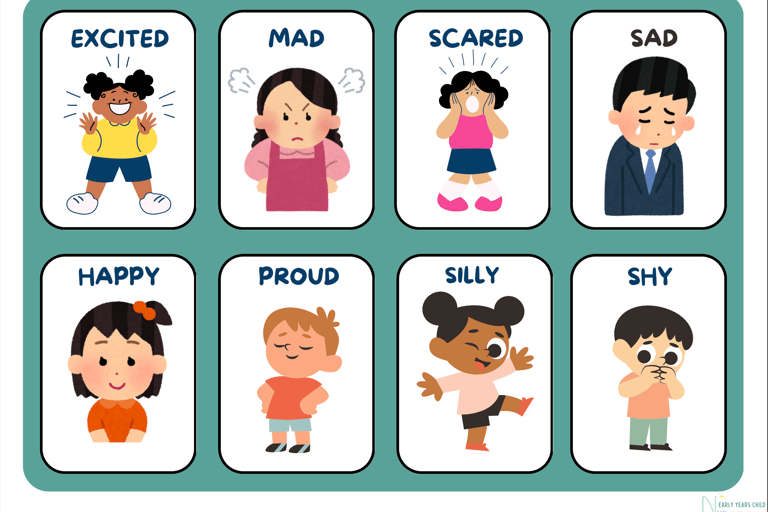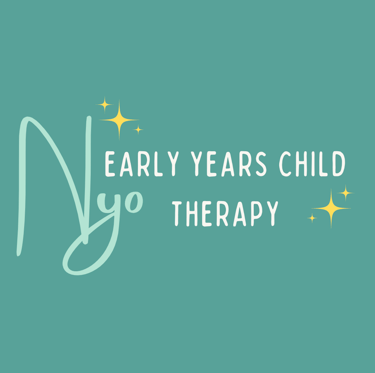Strengthening Your Child's Social Emotional Skills: Using Feeling Visuals at Home
Discover how to use feelings visual charts at home to strengthen your toddler or preschooler’s emotional vocabulary. Learn playful, practical ways to help your child identify and express emotions without overwhelm or pressure.
Priscilla Nyo, LMFT IFECMHS
10/17/20253 min read


How Can I Use Feeling Visual Charts at Home to Strengthen My Toddler & Preschoolers Emotional Vocabulary?
I love feeling visuals for young children because they create a bridge for expressing and learning about emotions, especially during a stage when feelings are big and the ability to regulate them is still very much under construction.
Feeling visuals aren’t a perfect, one-size-fits-all tool. However, they can be simply one powerful way to help your child build a strong foundation for emotional awareness and language. In general, it is great to have a variety of tools and avenues to open up the door to learning about feelings at home. Some other examples of tangible tools you could use at home are: feeling stuffed animals or puppets, books about emotions, etc.
The #1 Trap Parents Fall Into:
One of the most common mistakes I see parents make is introducing a feelings visual only when their child is already upset.
While the intention is good, introducing something new in the middle of a big emotion often backfires. When children are dysregulated, their brains aren’t in a state to learn, process, or try new tools. They might respond with indifference, frustration, or even bigger feelings.
So When Should I Use It?
Children learn best when they’re calm, playful, and engaged. That’s when their brains are most open to learning new things—like using a feelings chart.
If you save the visual for calmer moments, it becomes a familiar and safe tool your child can later access when emotions rise.
How to Introduce and Use a Feelings Visual at Home:
Here are some simple, practical ways to introduce and use a feelings visual effectively:
Choose where to hang it up in the house together.
Make it playful and lighthearted when using it. Avoid turning it into a “lesson” about recent behavior.
Lead with curiosity. Instead of quizzing your child (“What’s that feeling?” or “When do you feel sad?”), explore it together like you would a picture book.
Follow your child’s lead. Let them guide the pace and interest level.
Model how to use it by going to the feeling chart to identify and share your own feelings.
Make it a family effort, everyone is learning about it together instead of singling out 1 child.
Fun Ways to Use Your Feeling Visual at Home:
Match emotions from the chart to characters in your child’s favorite books you read.
Use storytelling or pretend play to show how the chart can help express feelings when words are hard to find.
Play "Guess That Feeling" with dolls of stuffed animals acting out the feelings.
Act out feeling faces together in front of a mirror.
Tip: Always keep it short and sweet and following your's child lead. Most importantly, make it fun!
How to Choose a Feeling Visual for Your Family:
For little ones 5 and under, choose a feeling visual with the basic emotions but avoid ones with too many emotion pictures that can become visually overwhelming and hard to use. I encourage between 6-10 emotions.
For toddlers, I encourage using a feeling visual with real faces or more realistic pictures of emotions and keeping it to basic emotions of 6-8 or less.
As they get older (and their emotional vocabulary grow), then their emotion chart can grow too!
If they are already loving a certain book with emotions, using a feeling visual that matches that book can be a great way to carry over their interest. (i.e, The Color Monster, Spots of Emotions, etc.)
Final Thoughts
Remember: this is just one tool and it doesn't have to be used all the time. The goal isn’t to force conversations about feelings, but to make emotional language a natural part of everyday life.
Live in California and interested in services for your family?
Click here to learn more about supportive therapy services with Priscilla!


Download a Printable Feeling Visual Here:
Nyo Therapy: Early Years Child Therapy
Providing child play therapy, parent child therapy, in-home play therapy and parent supports to families in San Diego, CA. Priscilla Nyo (Tebelman), LMFT specializes in infant family and early childhood mental health services. Priscilla offers support in home, in office and via telehealth.
Contact Priscilla
priscilla@nyotherapy.com
619-289-8093
© 2025. All rights reserved.
